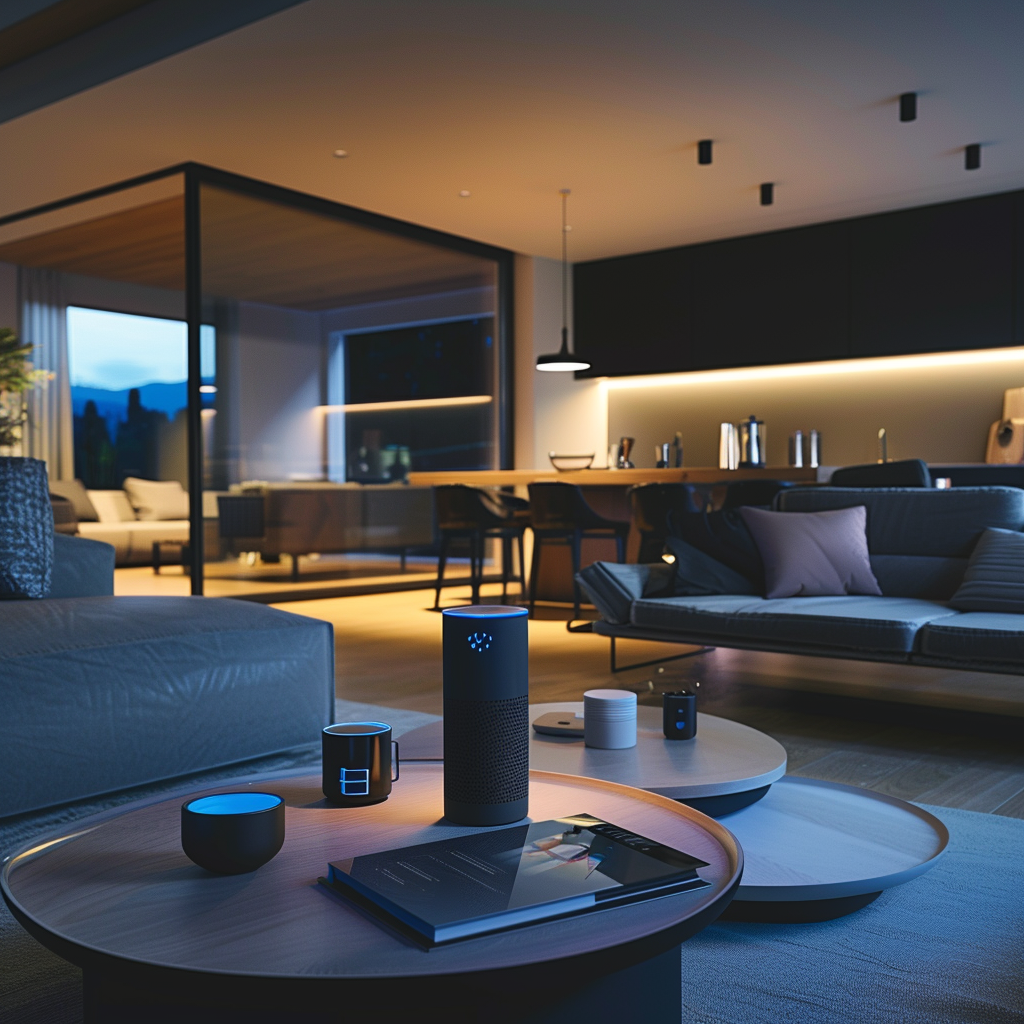1. Smart Speakers and Voice Assistants
Smart speakers like the Amazon Echo Dot and Google Nest Mini are some of the most affordable ways to introduce smart technology into your home. These devices not only function as speakers but also serve as voice assistants, allowing you to control other smart devices, play music, set reminders, and answer questions with simple voice commands.
Why It’s Affordable: Both the Echo Dot and Nest Mini often go on sale for under $50, making them an easy and budget-friendly entry point into the smart home ecosystem.
Actionable Tip: Place your smart speaker in a central location like the kitchen or living room to make the most of voice-controlled commands for tasks like setting timers, checking the weather, or controlling lights.
Unique Insight: These smart speakers also integrate with a wide range of other devices, so once you have one, you can easily expand your smart home setup over time.
2. Smart Plugs
Smart plugs are an inexpensive way to turn ordinary appliances into smart devices. These small adapters plug into your existing outlets and allow you to control whatever is connected to them via your phone or voice assistant. Whether it’s turning off lights, fans, or even your coffee maker, smart plugs give you remote control and automation over basic household items.
Why It’s a Must-Have: With prices as low as $10-$20, smart plugs from brands like TP-Link, Wyze, and Amazon are a quick and easy way to bring smart control to your home without needing to replace your appliances.
Actionable Tip: Use smart plugs to set schedules for energy efficiency. For example, you can program lights to turn off during the day or set your coffee maker to start brewing automatically in the morning.
Pro Insight: Some smart plugs even come with energy monitoring features, so you can track power usage and make adjustments to reduce your electricity bill.
3. Smart Light Bulbs
Smart lighting is one of the most impactful ways to transform your living space. Affordable smart bulbs, like those from Philips Hue or Wyze, allow you to control brightness, color, and scheduling from your phone or voice assistant. Whether you want mood lighting for movie night or brighter lights for reading, smart bulbs give you flexibility and control.
Why It’s Cost-Effective: Basic smart bulbs start at around $10, and many don’t require a hub—just screw them into your existing fixtures, and you’re ready to go.
Actionable Tip: Install smart bulbs in frequently used rooms like the living room, bedroom, or hallway for convenient lighting control and energy savings.
Pro Insight: Pair smart bulbs with motion sensors to automate lights based on movement, ensuring lights are only on when someone is in the room.
4. Smart Thermostats
A smart thermostat can be a game-changer for both comfort and energy efficiency. Models like the Google Nest Thermostat and Ecobee Lite allow you to control your home’s temperature from your smartphone, no matter where you are. These devices learn your habits and adjust the temperature to save energy when you’re away or asleep, lowering your heating and cooling costs.
Why It’s Worth the Investment: While smart thermostats typically cost between $100 and $150, they can quickly pay for themselves through energy savings. Some utility companies even offer rebates for purchasing and installing these devices.
Actionable Tip: Program your smart thermostat to lower the heat or air conditioning when you’re at work or asleep, and raise it again just before you return home or wake up.
Pro Insight: Some models have room sensors to detect hot or cold spots and adjust accordingly, ensuring a consistent temperature throughout your home.
5. Smart Security Cameras
Home security is another area where affordable smart gadgets shine. Devices like Wyze Cam, Blink Mini, and Ring Indoor Camera offer budget-friendly surveillance, allowing you to monitor your home through live video feeds or recorded clips. Most models come with motion detection and night vision, giving you peace of mind whether you’re at home or away.
Why It’s Smart: These cameras typically cost between $20 and $50, making home security accessible to everyone. Many models offer free cloud storage for video recordings or have local storage options via a memory card.
Actionable Tip: Place smart cameras at key entry points like doors or windows to monitor activity. Use the camera’s mobile app to receive alerts if any motion is detected.
Pro Insight: Some security cameras come with built-in two-way audio, so you can communicate with anyone at your door, even when you’re not home.
6. Smart Doorbells
Smart doorbells, like the Ring Video Doorbell and Eufy Security Doorbell, offer a simple and affordable way to monitor who’s at your door. These gadgets allow you to see and speak with visitors through your smartphone, even if you’re not home. Some models also offer motion alerts and record footage when someone approaches your door.
Why It’s Worth Considering: Smart doorbells typically range from $50 to $100 and offer enhanced security and convenience. You’ll never miss a package delivery or visitor again.
Actionable Tip: If you’re renting or don’t want to deal with wiring, choose a battery-powered smart doorbell for easier installation.
Pro Insight: Many smart doorbells integrate with other smart devices, such as lights or security cameras, creating a seamless home security system.
Conclusion: Making Your Home Smart Without Breaking the Bank
Upgrading your home with smart technology doesn’t have to come with a hefty price tag. From voice assistants and smart plugs to thermostats and security cameras, there are affordable gadgets available that offer both convenience and savings. Start small by choosing the devices that fit your needs, and gradually expand your smart home setup over time.












